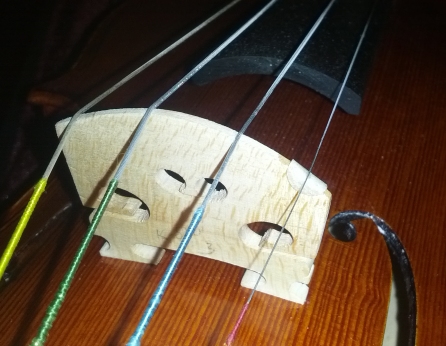Welcome to our forum. A Message To Our New and Prospective Members . Check out our Forum Rules. Lets keep this forum an enjoyable place to visit.
Currently working on errors from the latest (SimplePress) forum update. Many issues have been resoled and others are being worked on. Thank you for your patience.
 Topic RSS
Topic RSS



 (0 votes)
(0 votes) Pro advisor
Regulars
Glad you guys are technical... I'm sure not. I have a small patch on which is now my favorite fiddle so far. But, I still use the plastic sleeve on the e string and my human (poor rock star hearing ![]() cannot tell the difference. I don't have the time in a day to get so precise. I adjust by playing and playing and playing and just try to keep in tune that way. But it's very interesting to know that people really take the time to analyze in such detail.
cannot tell the difference. I don't have the time in a day to get so precise. I adjust by playing and playing and playing and just try to keep in tune that way. But it's very interesting to know that people really take the time to analyze in such detail.
Members
 Offline
Offline





Interesting bit of difference it makes, going from the charts, Denny.
From a player point of view, do you feel the difference in sound is noticeable?
"This young wine may have a lot of tannins now, but in 5 or 10 years it is going to be spectacular, despite the fact that right now it tastes like crude oil. You know this is how it is supposed to taste at this stage of development." ~ Itzhak Perlman
1 Guest(s)


 Log In
Log In Register
Register























